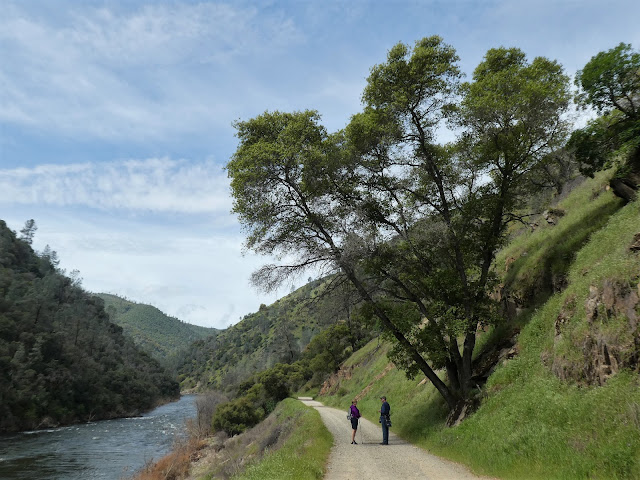
Cercis occidentalis (Western Redbud)

Cercis occidentalis (Western Redbud)
Photos taken in April 2018
Click here for more photos of Merced Wild and Scenic River.
From our resort near Yosemite National Park, we drove a few miles up HWY 140 to the Merced River Trail. I loved it. The river was beautiful & the banks were filled with an abundance of plants, vibrant with new growth & many flowers. I was fascinated by the California native plants I had studied in landscape design school in San Francisco. The weather was cool & partly cloudy. We walked for 3 hours on a dirt road with no cars
The Merced is designated a wild & scenic river under the Wild & Scenic Rivers Act of 1968 by the US Congress. It is one of 11 wild & scenic rivers in California. There is a variety of native, endemic &/or rare plant species along the river with many small meadows & riparian habitats. The river begins high in the Sierra Nevada Mountains. It flows through Yosemite National Park & on to the Sacramento Valley where it joins the San Joaquin River. 8 miles of the lower Merced River from Briceburg downstream to Bagby (near Yosemite National Park) received wild & scenic status in 1992. 3 of those miles are wild, the only wild (most pristine) segment outside Yosemite National Park. That section of the river ends when it joins lake McClure above Bagby.
The Merced River along Highway 140 (outside the park) is designated recreational. This segment of the river provides access to the free-flowing river & makes HWY 140 the most scenic route into Yosemite National Park. We had easy access to walk along this part of the river by turning off HWY 140 at Briceburg Rd, crossing a suspension bridge, parking in a small lot near the river & the highway 16 miles below the Arch Rock Entrance to Yosemite National Park.








































































